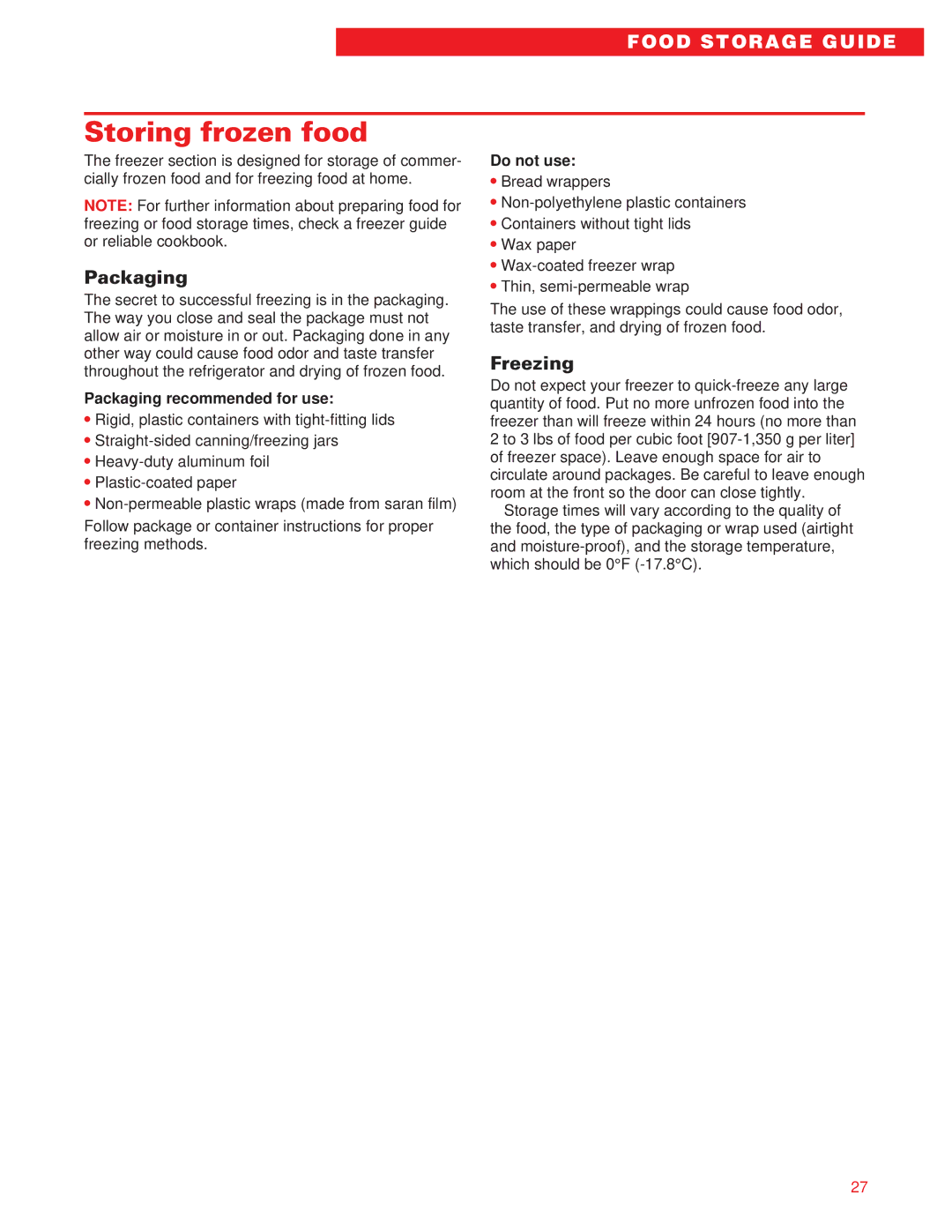
FOOD STORAGE GUIDE
Storing frozen food
The freezer section is designed for storage of commer- cially frozen food and for freezing food at home.
NOTE: For further information about preparing food for freezing or food storage times, check a freezer guide or reliable cookbook.
Packaging
The secret to successful freezing is in the packaging. The way you close and seal the package must not allow air or moisture in or out. Packaging done in any other way could cause food odor and taste transfer throughout the refrigerator and drying of frozen food.
Packaging recommended for use:
•Rigid, plastic containers with
•
•
•
•
Follow package or container instructions for proper freezing methods.
Do not use:
•Bread wrappers
•
•Containers without tight lids
•Wax paper
•
•Thin,
The use of these wrappings could cause food odor, taste transfer, and drying of frozen food.
Freezing
Do not expect your freezer to
Storage times will vary according to the quality of the food, the type of packaging or wrap used (airtight and
27
